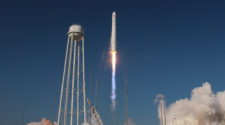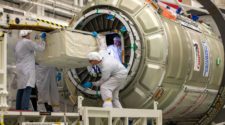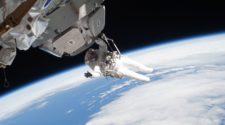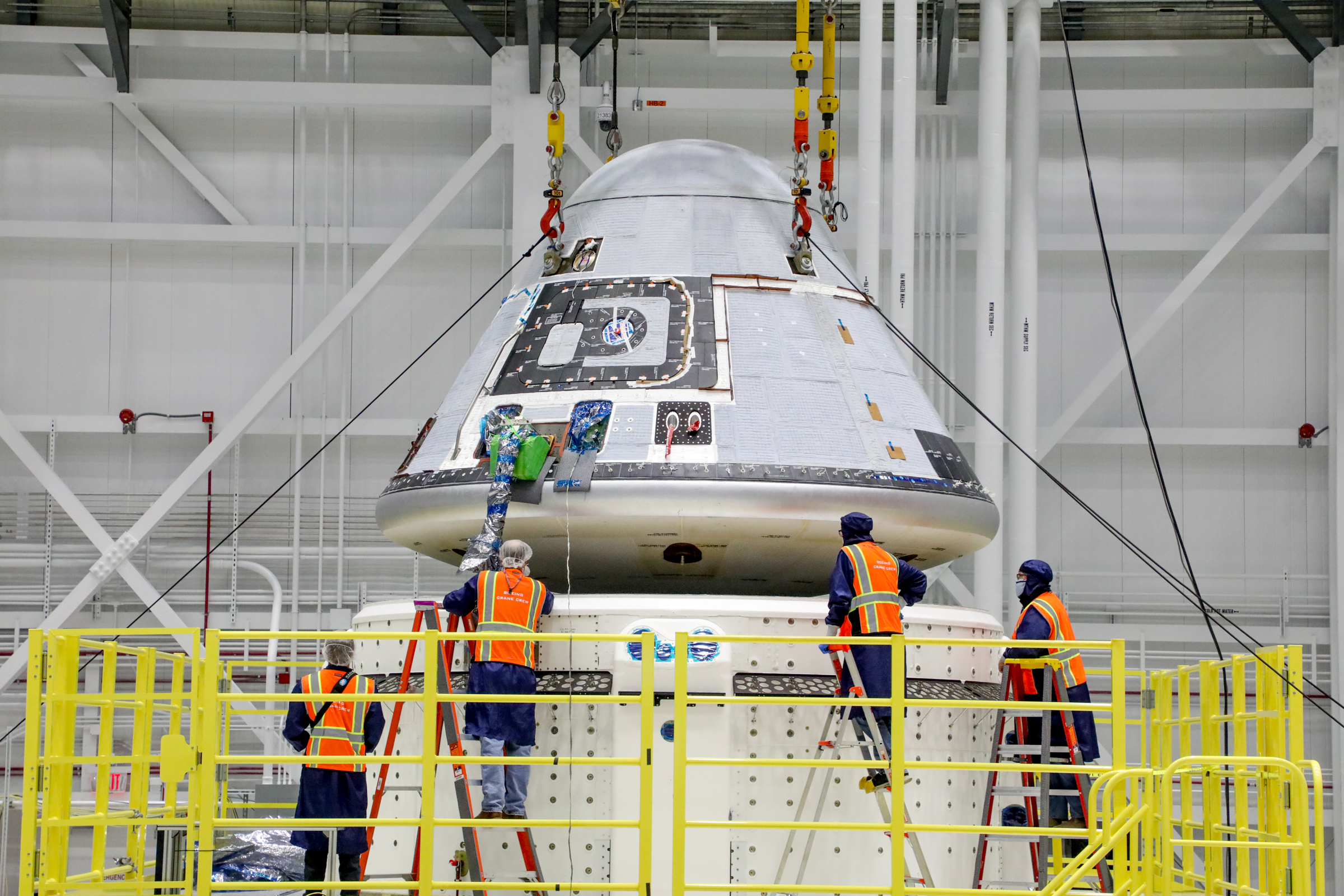
Boeing’s next uncrewed Starliner test flight set for April 2
CAPE CANAVERAL, FL – Following a military mission delay for the U.S. Space Force, winter storms blanketed Texas, and a need for spacecraft and hardware processing time, NASA and Boeing are now targeting NET April 2, for the launch of Starliner’s second uncrewed flight test as part of the agency’s Commercial Crew Program (CCP).
“NASA continues to work alongside Boeing to prepare for this first mission of 2021,” said Steve Stich, manager of NASA’s Commercial Crew Program. “The Boeing and NASA teamwork on all aspects of flight preparation including final certification, hazard analysis, and software testing is extraordinary. Even though this uncrewed flight test to the International Space Station is a key milestone on the path to the first Starliner crewed mission planned for later this year, we will fly when we are ready.”
Boeing is developing Starliner to function as an astronaut space taxi as a commercial vehicle under contract from NASA to ferry crews to and from the International Space Station.
ULA had intended to launch the STP-3 for the U.S. Space Force on the next Atlas V launch scheduled for liftoff this month from pad 41 on Cape Canaveral Space Force Station, Florida.
With the STP-3 blastoff now postponed indefinitely to evaluate the launch readiness of the national security satellite, ULA has switched its focus to stacking the Atlas V designated for the Starliner OFT-2 mission for NASA at Space Launch Complex-41. At the same time, Boeing is making steady progress in preparing the new Starliner crew vehicle and service module for the mission.
The goal of a second uncrewed test flight OFT-2 is to verify the Starliner CST-100 commercial space taxi is safe and reliable enough to be entrusted to launch NASA astronauts in the future to the International Space Station (ISS).
The original OFT test flight failed to dock at the ISS as planned following launch on 20 December 2019 when a mission elapsed timing error caused the maneuvering thruster to fire longer than planned and expend excess precious fuel and place the ship in the wrong orbit.
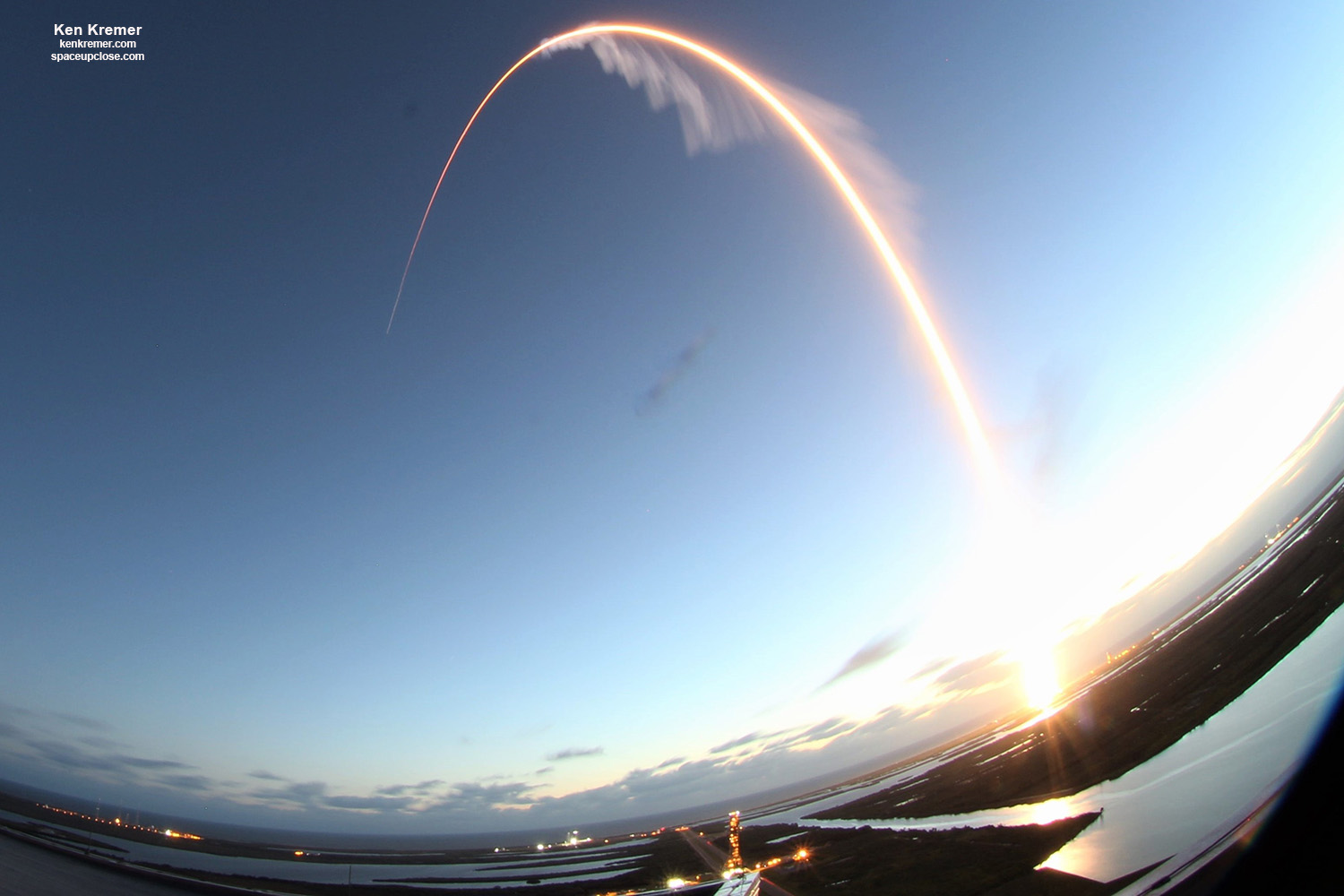
“Boeing also recently completed the formal requalification of Starliner’s OFT-2 flight software. Teams conducted a full software review and several series of tests to verify Starliner’s software meets design specifications. Boeing also will complete an end-to-end simulation of the OFT-2 test flight using flight hardware and final versions of Starliner’s flight software to model the vehicle’s expected behavior before flight.”
Teams have completed about 95% of the recommendations identified by the joint NASA and Boeing Independent Review Team, formed following the anomalies during the company’s first uncrewed Orbital Flight Test in December 2019.
“We appreciate the significant work NASA is undertaking ahead of launch,” said John Vollmer, Starliner’s vice president and program manager at Boeing. “We’re fully engaged in the agency’s review process as a valuable investment of our time to ensure confidence in the spacecraft.”
Starliner will launch on the OFT-2 mission on a United Launch Alliance Atlas V rocket augmented with two solid rocket boosters from Space Launch Complex-41 at Cape Canaveral Space Force Station in Florida.
As with the prior test flight, the goal is to dock to the ISS and return to land in the western United States about a week later as part of an end-to-end test flight to prove the system is ready to fly crew.
The failures in the original OFT mission have resulted in about a one-year delay so far to the goal of flying a crew of three NASA astronauts on the inaugural crewed mission to the ISS dubbed CFT or Crew Flight Test.
If all goes well CFT will fly as soon as this summer on a ULA Atlas V from pad 41 for a mission of roughly a week or two docked at the orbital space station.
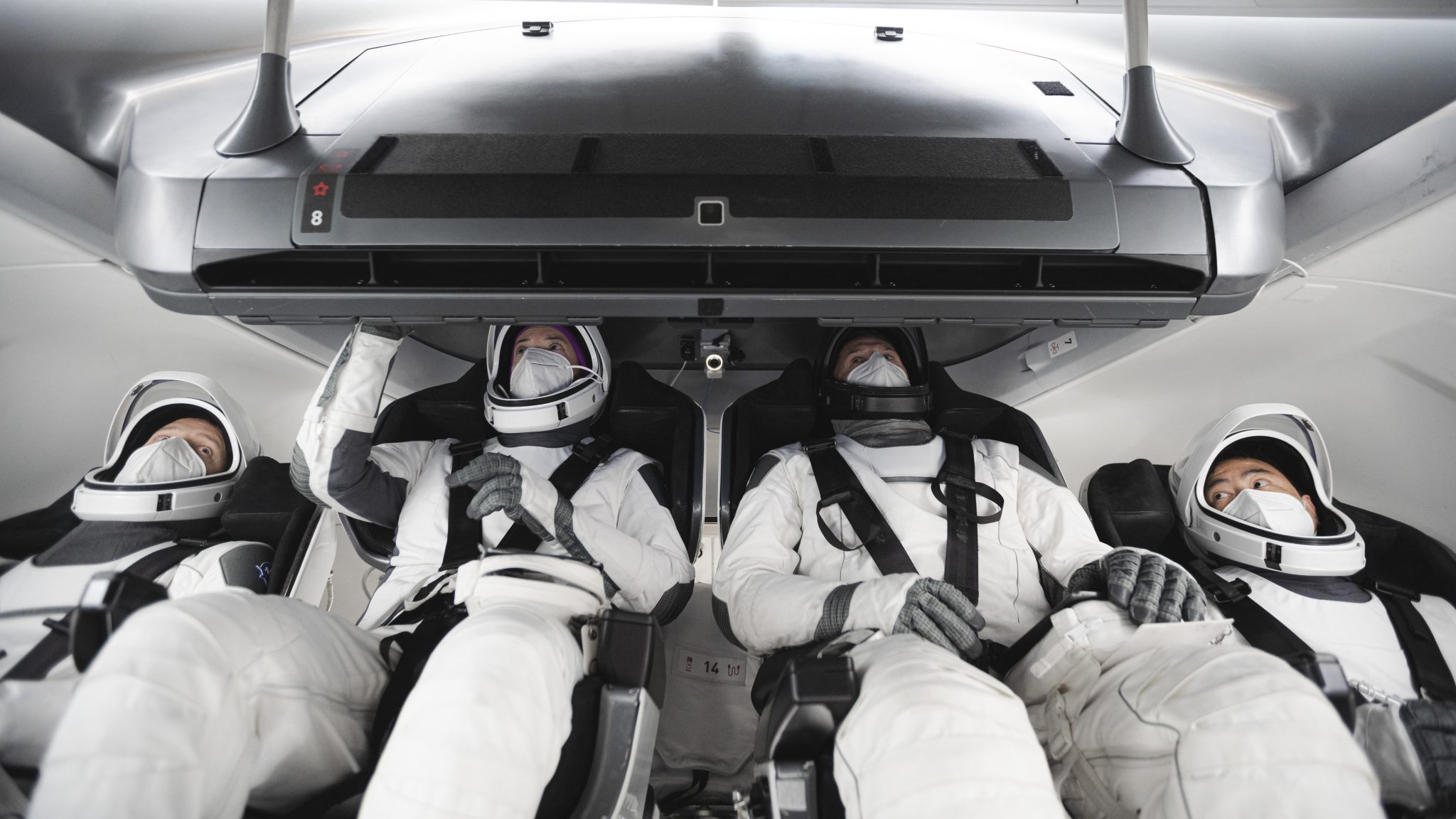
SpaceX targets April 20 for Crew-2 launch to ISS
NASA and SpaceX announced they are targeting no earlier than (NET) April 20 for liftoff of the Crew-2 mission on the second commercial crew rotation mission from the United States to the International Space Station (ISS).
The four-person Crew-2 mission will launch aboard a SpaceX Crew Dragon spacecraft on a Falcon 9 rocket from Launch Complex 39A at NASA’s Kennedy Space Center in Florida to the ISS.
The multinational crew includes two NASA astronauts as well as two from international partners as part of the agency’s Commercial Crew Program. The all-veteran foursome is comprised of NASA astronauts Shane Kimbrough and Megan McArthur serving as spacecraft commander and pilot, respectively in addition to Japan Aerospace Exploration Agency (JAXA) astronaut Akihiko Hoshide, and ESA (European Space Agency) astronaut Thomas Pesquet as mission specialists.
The Crew-2 astronauts are scheduled for a roughly six-month ”long-duration stay aboard the orbiting laboratory, living and working as part of what is expected to be a seven-member crew,” says NASA.
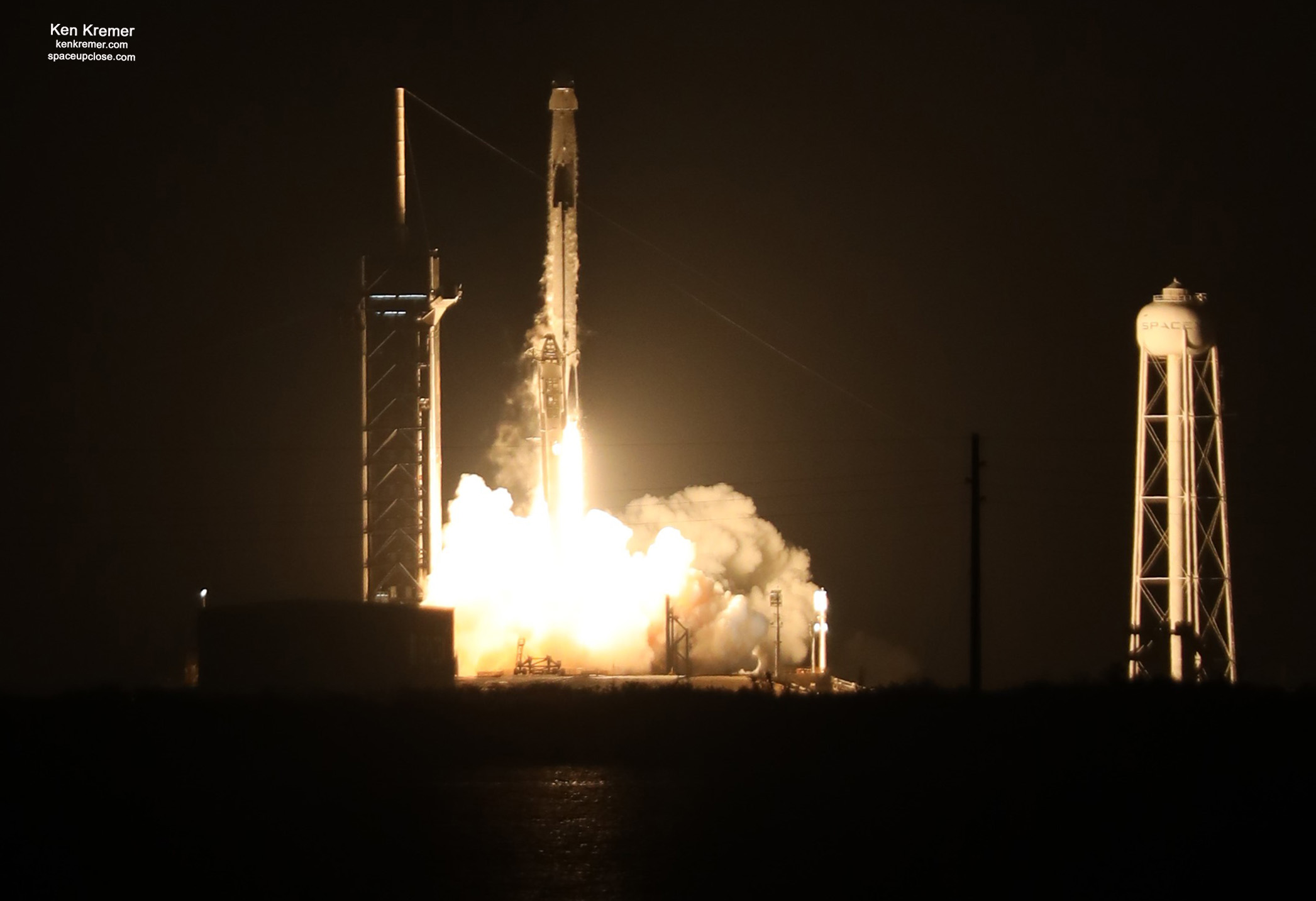
Until recently Crew-2 was expected to launch in late March. But NASA has now decided to target the launch of the second uncrewed Boeing Starliner Orbital Test Flight-2 mission to NET April 2 and thus delay Crew-2 into late April.
Crew-2 will arrive at the ISS for an overlap of at least a few days with the four-person SpaceX Crew-1 astronauts currently aboard as part of Expedition 64. Crew-2 will remain aboard until fall 2021 and overlap with SpaceX Crew-3 launching in Fall 2021.
Crew-1 comprises NASA astronauts Michael Hopkins, Victor Glover and Shannon Walker, along with JAXA astronaut Soichi Noguchi. They are currently scheduled to return to Earth in late April or early May.

